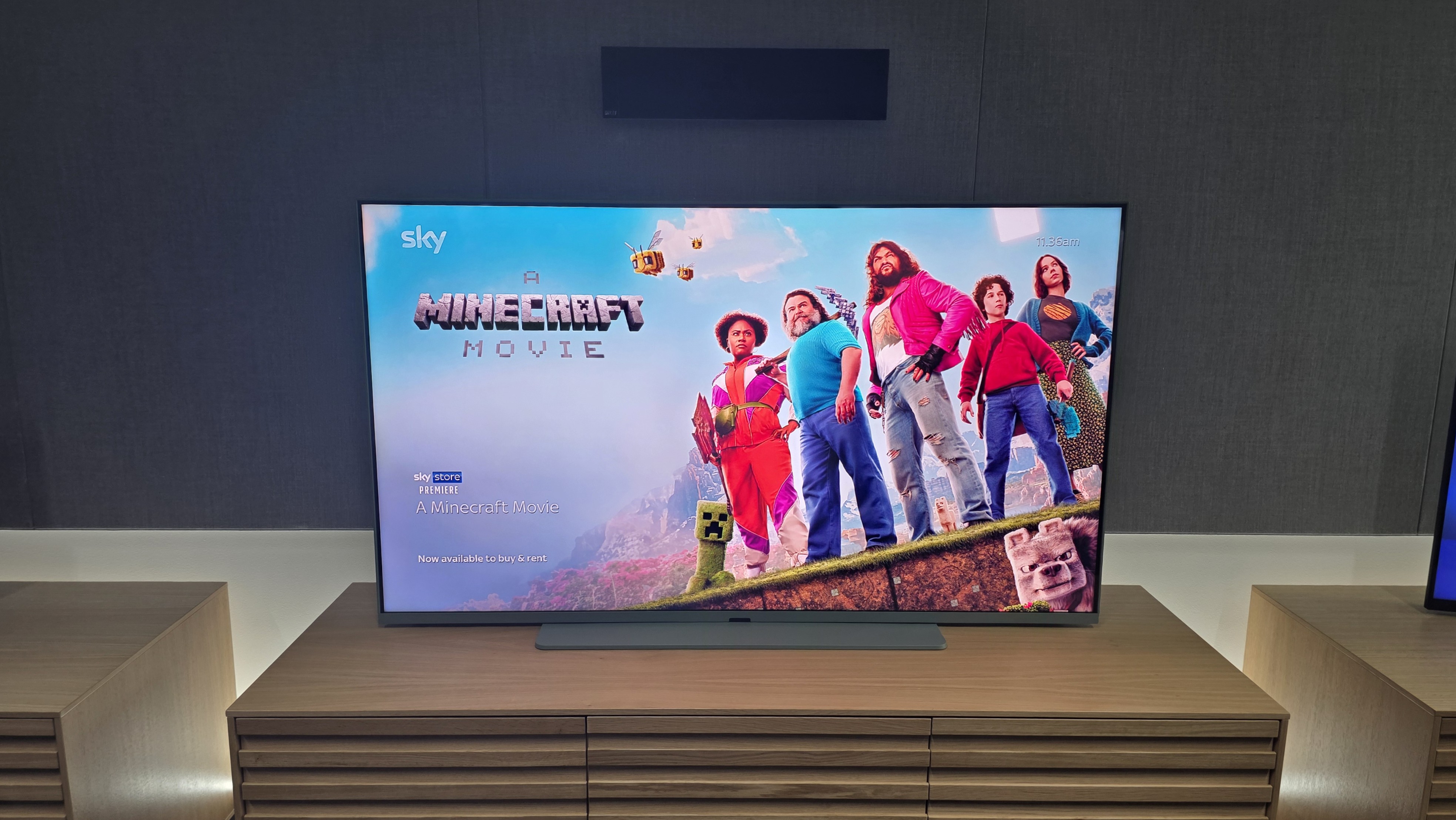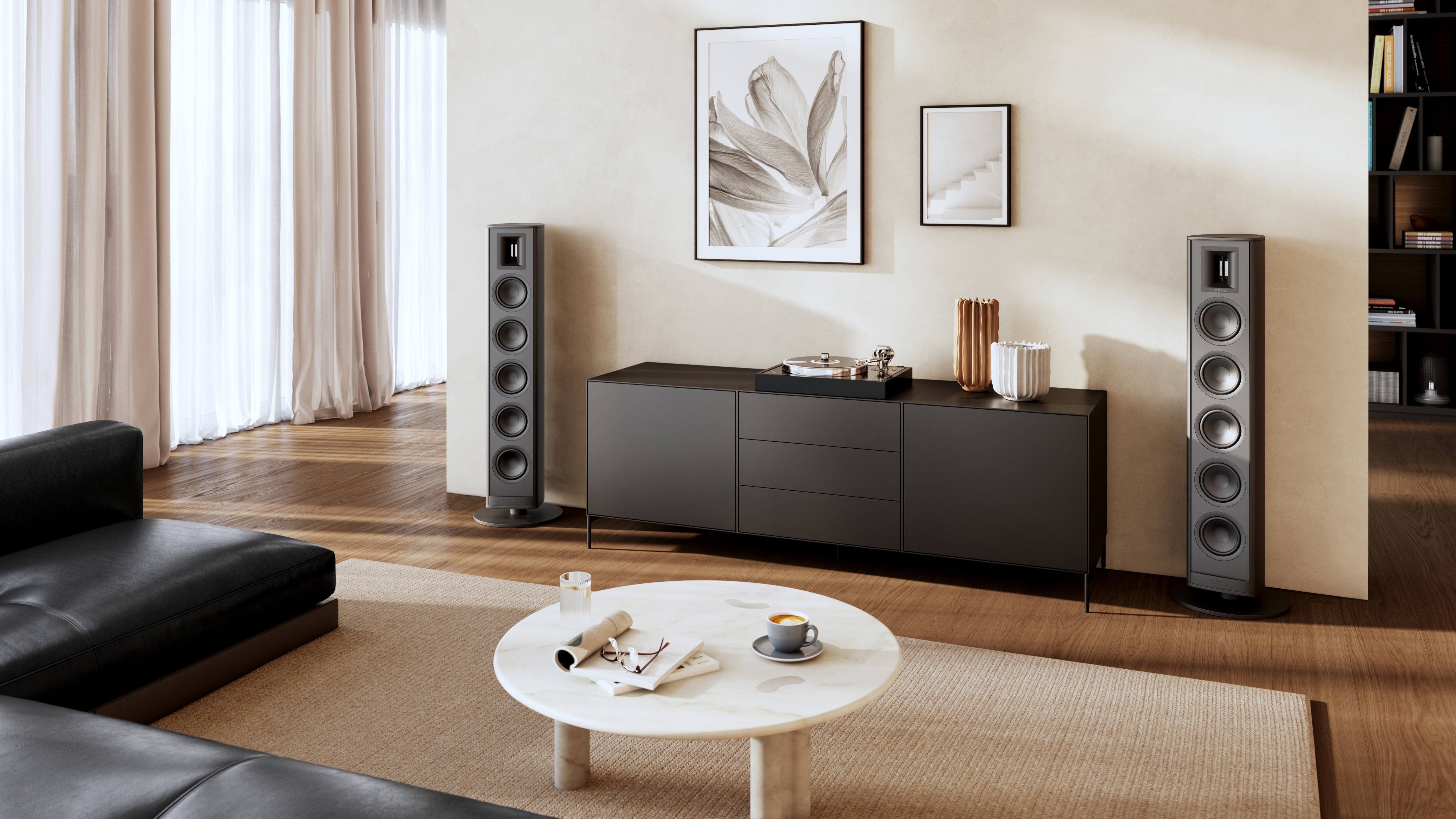Early Verdict
It's too early to say whether you should buy the Sky Glass Air, but its temptingly low price could be enough to draw casual viewers in; just remember you'll need to factor in the price of Sky TV. Performance-wise, the Glass Air certainly seems more basic, but that's to be expected.
Pros
- +
Very cheap monthly payment options
- +
Sky OS is a great TV operating system
- +
Picture appears bright and detailed
Cons
- -
Contrast appears slightly weak
- -
Sound is basic (compared to Glass Gen 2)
- -
Needs further testing
Why you can trust What Hi-Fi?
Sky Glass is one of the most unconventional TVs on the market, not because it features a radical new design or an unusual set of AV features, but rather due to how it's positioned.
It adopts a subscription-style strategy that is more closely related to a phone contract rather than a TV; you pay monthly for the hardware (the Glass TV) and the service (Sky's TV packages), all of which can be customised with countless combinations.
Now in its second generation, and after seeing a huge level of success according to Sky, the Glass is fairly well established – although one sticking point remains.
Until now, there has only been one TV to choose from, albeit in different sizes, but still; if you want a TV made by Sky, it's Glass or nothing.
That changes today, as Sky has a new edition of the Glass, which is primed for first-time TV buyers or those with more restricted budgets. The Glass Air strips back a few key features, but in doing so, it reaches an absurdly low price point.
The real question is this, though: has Sky sacrificed too much to reach this entry-level point? That can only be answered with a full review; as for now, I have some early impressions to share after a demo session held at Sky's headquarters in Isleworth, London.
There, I had the opportunity to see the Glass Air in all three sizes. While my time with them was nowhere near long enough to conduct a full review, I did manage to gather a few thoughts. Most importantly, I was told how much it costs; and I still can't quite believe it…
The latest hi-fi, home cinema and tech news, reviews, buying advice and deals, direct to your inbox.
Pricing and availability
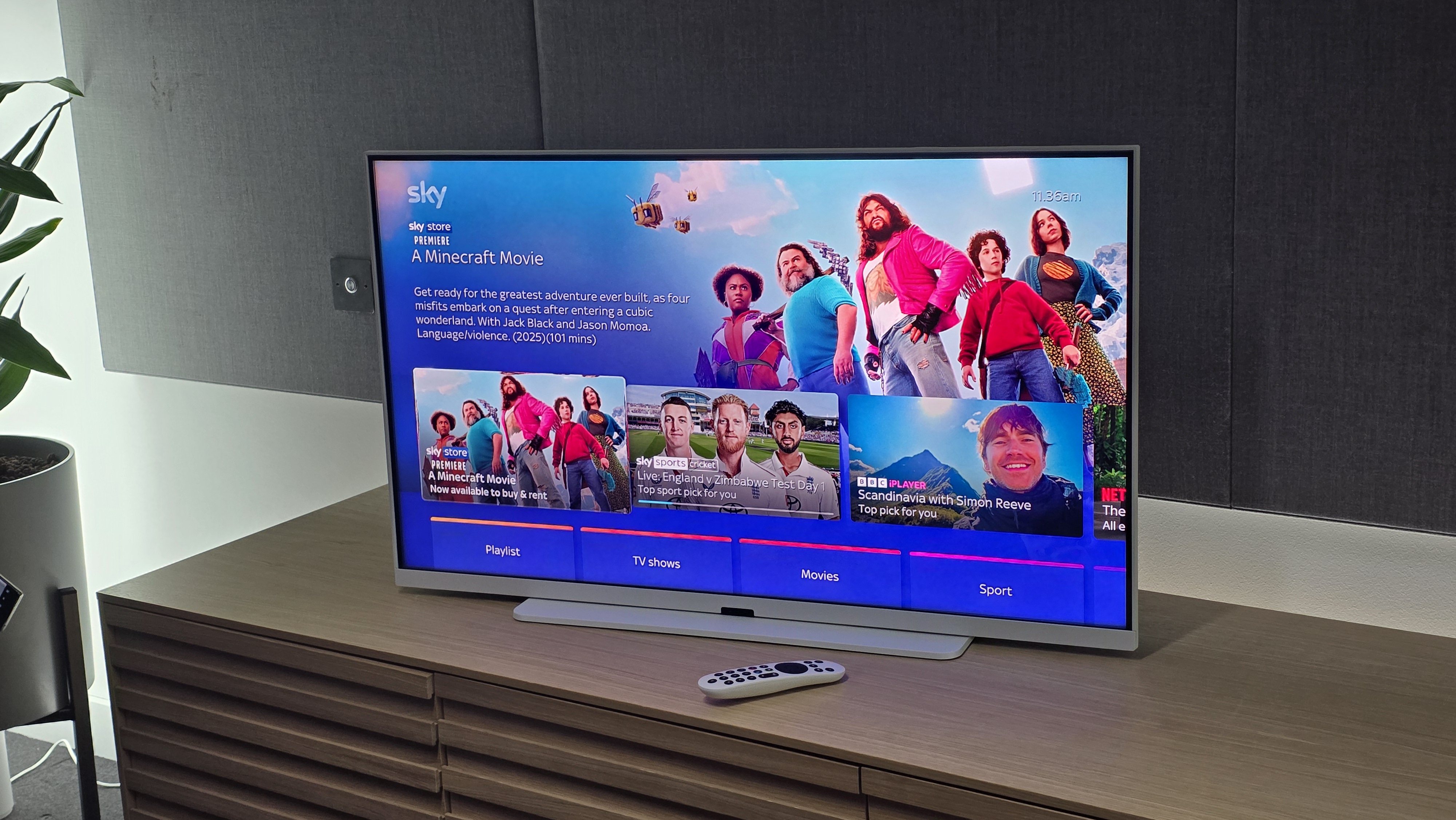
The Glass Air is, fundamentally, a cheaper Sky Glass. There are still a plethora of different options and packages to choose from, which can shift the monthly cost greatly, but Sky confirms it starts at just £6 per month.
That's for the 43-inch model on a 48-month contract; the 55-inch version starts at £10 per month, and the 65-inch model will cost £13 per month. Regardless, that low price caught me off guard during Sky's hands-on demo; I knew it was going to be cheap, but not that cheap.
Sky will also allow you to buy the TV outright if you'd prefer, or opt for a 12-month contract, which will double the prices mentioned above. Upfront costs for the three sizes are as follows: £309 for the 43-inch Glass Air, £509 for the 55-inch model and £649 for the 65-inch version.
The obvious catch in all this is that the hardware is only a portion of your monthly subscription cost. You will also need to shell out for a Sky TV package, as the TV is practically useless without one. Sky Essential is the cheapest option here at £15 per month, and it includes Sky's flagship live channels alongside a basic Netflix with Ads subscription.
Using our powers of mental arithmetic, we can deduce that the Glass Air really starts at £21 per month for the 43-inch TV – which is still much cheaper than the Glass Gen 2.
That TV starts at £14 per month for the 43-inch model, £19 for the 55-inch version, and £24 per month for the 65-inch TV. That's a pretty significant price difference, so those looking for a cheaper entry point to Sky TV might find this step-down model rather alluring.
Sky is launching the Glass Air on the 10th of June through its first-party channels (its official website, call centre and physical stores), as well as Currys.
Build
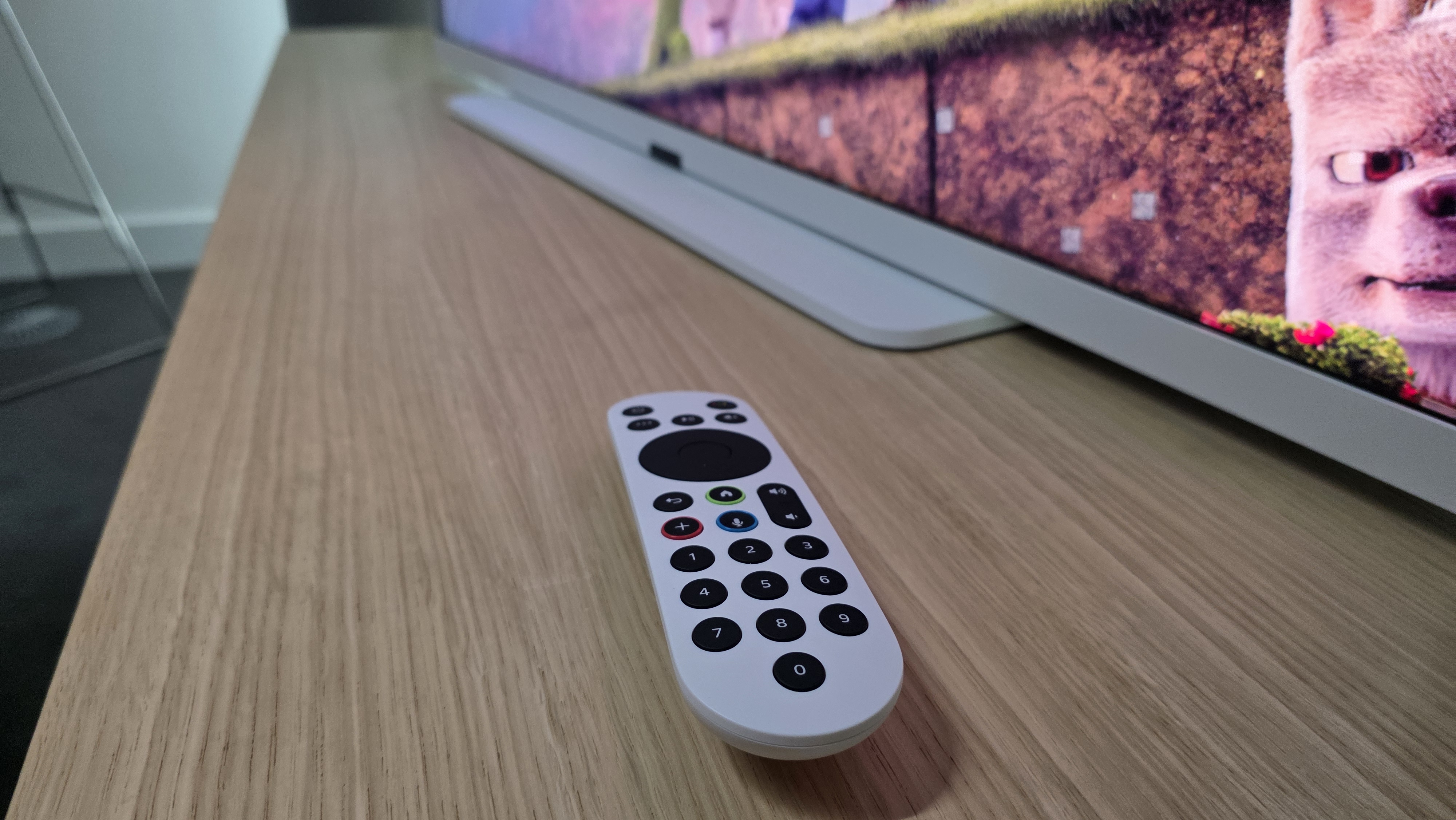
The Glass Air looks very much like a Glass Gen 2 from the front, without the soundbar that sits below the screen; more on that shortly. It features the same low-profile stand and rectangular base plate as the Glass Gen 2, and Sky has even carried across the easy assembly which involves slotting the stand into place – no screws required.
From the side, however, the Glass Air bears the marks of a cheaper TV, as the boxy flat sides and premium, colour-matched rear panel of the Glass Gen 2 are nowhere to be seen. Instead, it's a black plastic rear panel with mounting points for a wall bracket and side-facing ports.
It may not look quite as sleek as the Glass Gen 2, but its price makes that easily forgivable. It even comes in a new selection of colours not found on the flagship model: carbon grey, cotton white and, my personal favourite, sea green.
Bundled with the Glass Air is the same backlit remote control that is included with Glass Gen 2 and Sky Stream, and it's even colour matched to whichever finish you choose.
Features
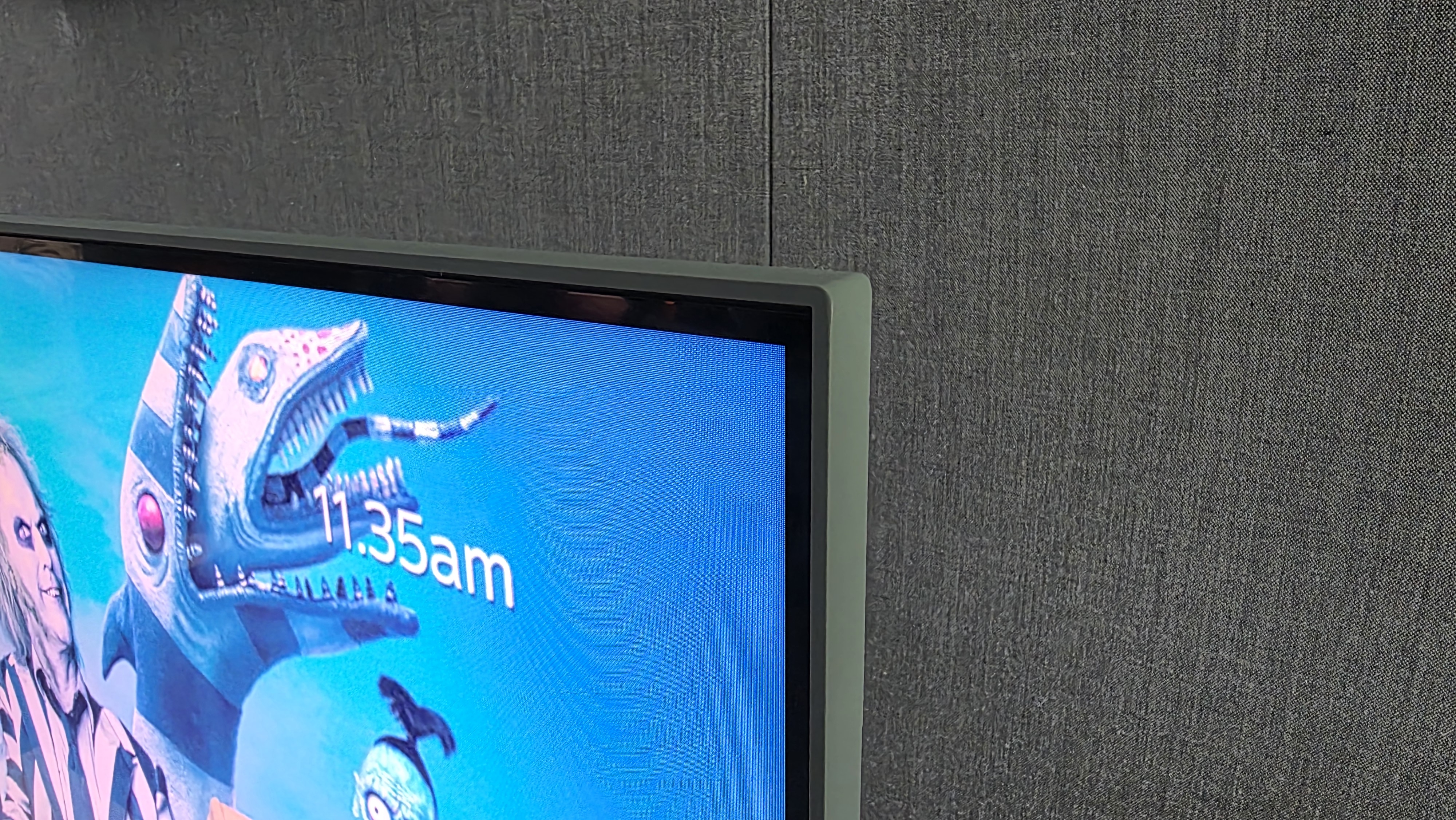
It should come as no surprise that to achieve this cheaper price tag, some sacrifices had to be made in the features department. The biggest cutback is the sound system, which drops from a 3.1.2 channel Dolby Atmos system to a two-channel downward-firing discrete speaker system.
This feels like the right sacrifice to make, in my opinion. The TV still features HDMI eARC for attaching an optional sound system if the user desires. Sky's reasoning was also crystal clear at the hands-on event, where it simply said, "Some customers want a TV without a soundbar". Fair enough.
The panel is also a step back compared with the Glass Gen 2, though it's still a backlit Quantum Dot panel, which is nice to see. However, it steps down to global dimming, though Sky stressed that it is a directly lit panel rather than the edge-lit option, which should improve black levels. It's also a 60Hz panel, so gamers may wish to steer clear, though it does support Dolby Vision, HDR10 and HLG.
The biggest draw is, of course, the inclusion of Sky OS. Sky's interface has been subject to constant updates and improvements in the past few years, and it's hard to argue with its long list of features. The ability to access shows and add them to a system-wide playlist regardless of the service they are hosted on remains a fan favourite, while the voice interaction system is robust.
Picture

Sky's mission with the Glass range is to make a hub for watching its content in the way it's intended to be seen. Which is why there is a general hands-off sense to how picture settings are handled, especially compared with the complex OLED TVs we often see in our AV testing room.
Considering the Glass series is positioned towards casual users who prefer a plug-and-play viewing experience, this is understandable. Sky has placed its intelligent Auto picture mode at the forefront of the viewing experience, though its punchy Extra Vivid mode was also on display.
I saw a range of content on the Glass Air, including clips from The Last of Us, The Secret World of Sound with David Attenborough, a Brentford vs Tottenham Hotspur football match, a Formula 1 night race, and Despicable Me 4 – quite the variety.
Generally speaking, the Sky Glass Air seems pretty respectable for the price, with a detailed and colourful image that can deliver punch when required. The brake lights on the F1 cars, for instance, appeared fairly bright and clear, while a hovering bee in David Attenborough's nature documentary looked crisp.
The opening scene of The Last of Us season 2 seemed natural-looking, perhaps a touch washed out in some aspects, but once again, admirable considering the cost of the TV. We often see TVs at this price attempt to punch above their weight, but Sky seems to understand the limitations of the hardware.
That doesn't necessarily mean it is restricting itself – the Extra Vivid mode amped the animated family flick Despicable Me 4 up to a much higher brightness than seen on the auto mode, and colours were also kicked into overdrive. This isn't the mode I would probably recommend for daily viewing, but it's a solid choice for cartoon fans.
In both the sports-oriented demonstrations I was shown – F1 and football – motion didn't appear to be an issue, though that, alongside many other picture aspects, will require further testing in our dedicated AV testing room in our full review.
There are, however, some unavoidable pitfalls of the panel. The biggest appeared to be contrast, as there didn't appear to be a whole lot of depth or dynamism to the image. This is probably a deficiency caused by the global dimming system, which has been implemented as a cost-saving measure.
Overall, the Glass Air seems to make a strong case for itself on this initial showing, especially with the price in mind.
Sound
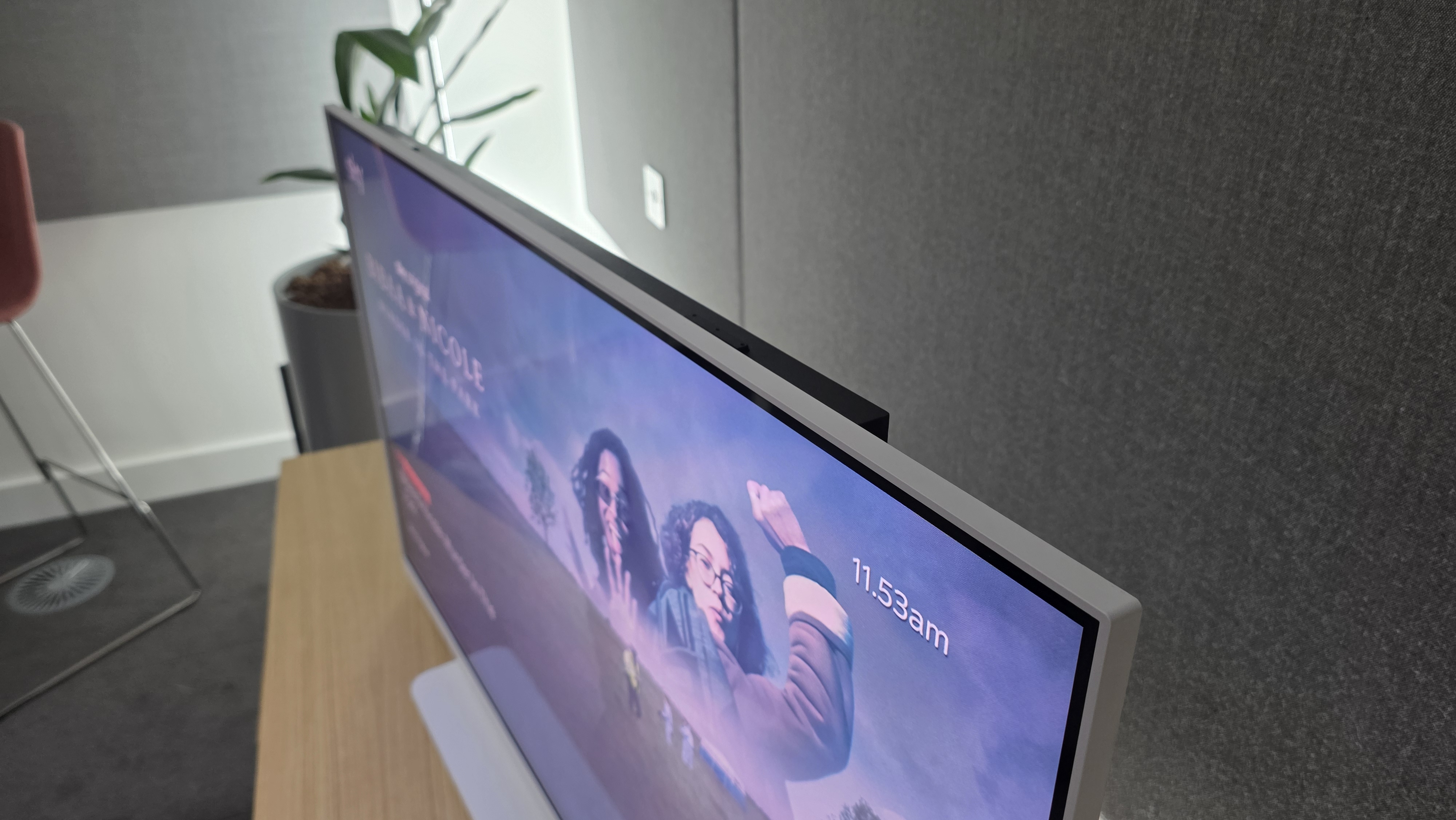
The sound is where the biggest cutback appears to have been made compared with the full-fat Glass TV. It's a noticeable downgrade, with the TV delivering a thinner and less atmospheric sound overall, but it does a solid job of prioritising clear vocals.
It sounds roughly as I would expect from a budget TV, though none of the scenes seemed to stress the speakers in any great way. I can see low end being a potential issue on this speaker system, and Blade Runner 2049's chapter two sequence will put this to the test when we conduct our full review.
Early verdict
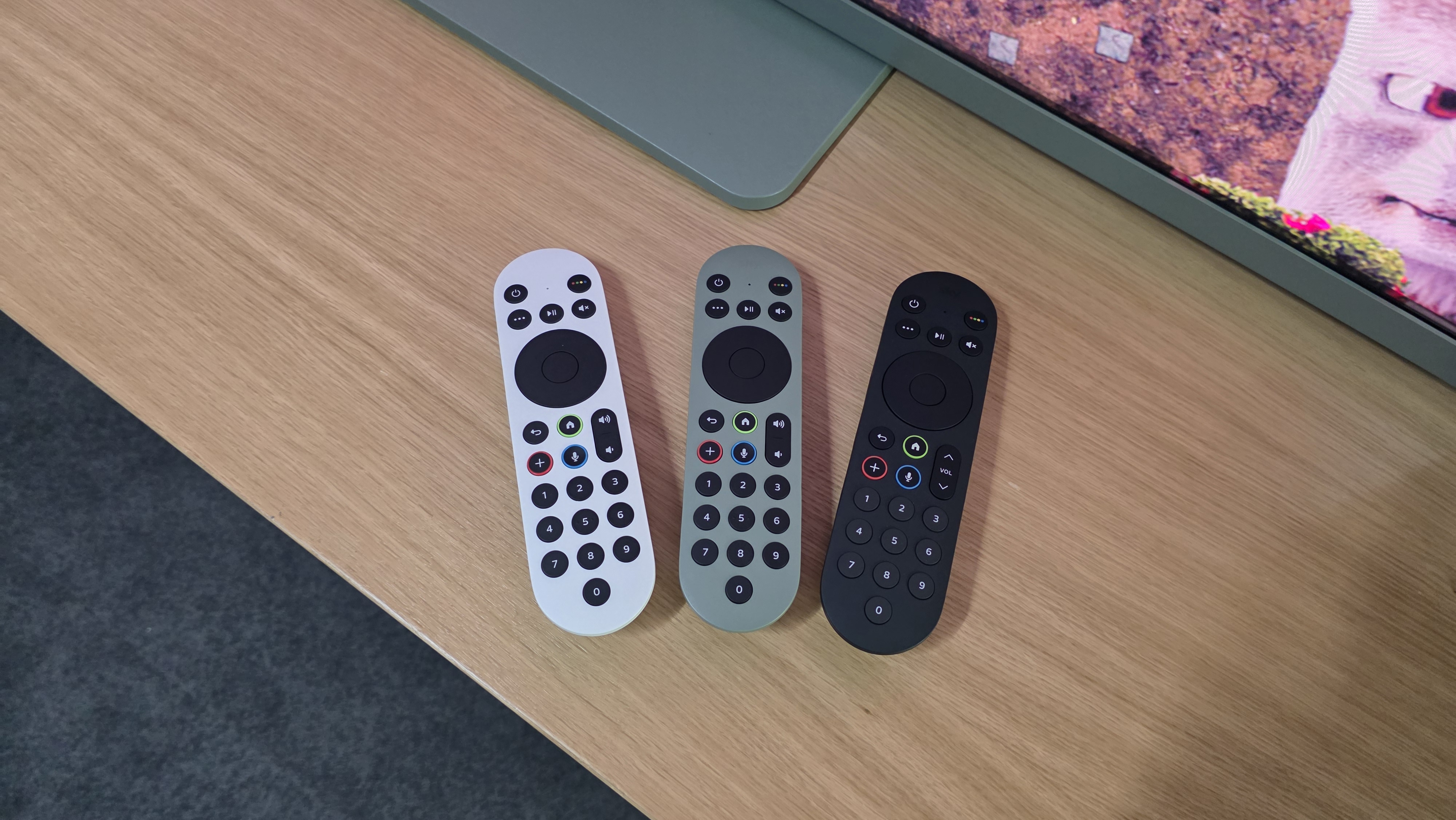
The Sky Glass Air is a simple proposition. It's a cheaper Sky Glass that retains the Sky experience at its core, and cuts back on a few of the more premium features offered by the Glass Gen 2.
It's too early to apply a full verdict, as we need to conduct our rigorous testing process to determine if the Glass Air is truly worth your money. Based on an early demonstration of the TV, though, it seems Sky has sensibly considered what it needed to cut back and what to keep to achieve this more affordable gateway to Sky TV.
MORE:
Read our full Sky Glass review
Check out the best Sky TV deals here
And our picks for the best TVs
Lewis Empson is a Senior Staff Writer on What Hi-Fi?. He was previously Gaming and Digital editor for Cardiff University's 'Quench Magazine', Lewis graduated in 2021 and has since worked on a selection of lifestyle magazines and regional newspapers. Outside of work, he enjoys gaming, gigs and regular cinema trips.
What is a hands on review?
'Hands on reviews' are a journalist's first impressions of a piece of kit based on spending some time with it. It may be just a few moments, or a few hours. The important thing is we have been able to play with it ourselves and can give you some sense of what it's like to use, even if it's only an embryonic view.
You must confirm your public display name before commenting
Please logout and then login again, you will then be prompted to enter your display name.
